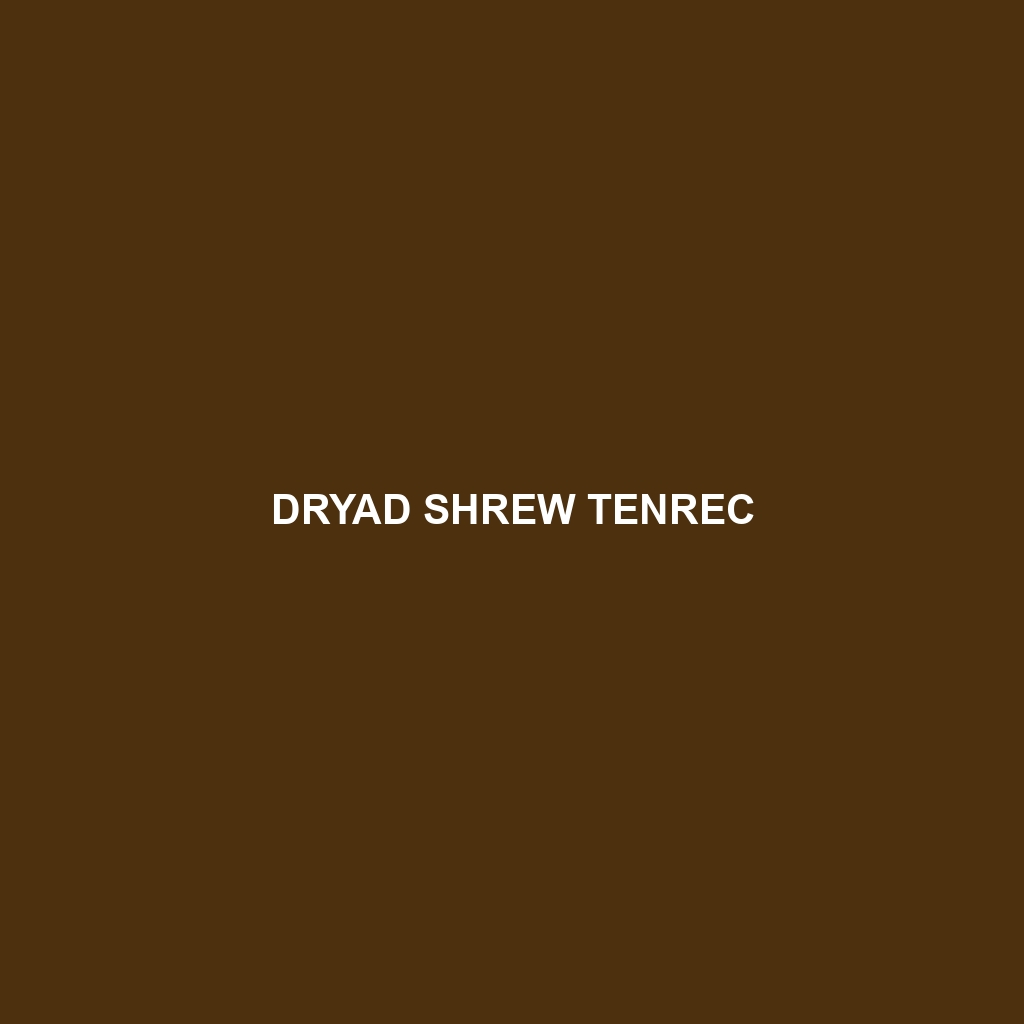Dryad Shrew Tenrec
The Dryad Shrew Tenrec (Microgale dryas) is a small, enigmatic mammal native to the lush rainforests of Madagascar. Resembling a shrew in appearance, this tiny tenrec is a member of the diverse Tenrecidae family, which showcases a variety of forms and lifestyles. Despite its modest size, the Dryad Shrew Tenrec plays a vital role in its ecosystem, contributing to insect control and soil aeration.
Physical Characteristics:
Size: The Dryad Shrew Tenrec is a diminutive creature, with adults typically measuring between 10 to 15 centimeters (4 to 6 inches) in length, including the tail, and weighing approximately 15 to 30 grams (0.5 to 1 ounce).
Coloration: This tenrec sports a sleek, brownish-gray fur that blends seamlessly with the forest floor, providing excellent camouflage from predators.
Special Features: The Dryad Shrew Tenrec has a pointed snout and small, beady eyes adapted for its nocturnal lifestyle. Its limbs are equipped with sharp claws, ideal for digging and foraging. Additionally, it has sensitive whiskers that help it navigate through dense undergrowth and detect prey.
Behaviors:
Social Interactions: Typically solitary, the Dryad Shrew Tenrec exhibits minimal social interaction outside of the breeding season. They are known to be territorial, with each individual maintaining a distinct home range.
Feeding Habits: As an insectivore, this tenrec’s diet primarily consists of insects, spiders, and other small invertebrates. It uses its keen sense of smell and acute hearing to locate prey in the dark, often digging through leaf litter and soil.
Ecological Roles: By preying on insects and other small creatures, the Dryad Shrew Tenrec helps control pest populations. Their burrowing behavior also contributes to soil aeration, promoting plant health and forest ecosystem balance.
Habitats:
Preferred Environment: The Dryad Shrew Tenrec thrives in the humid, dense rainforests of Madagascar. They are well-adapted to the understory, where they can find ample cover and food.
Range: This species is endemic to Madagascar, meaning it is found nowhere else in the world. Its distribution is limited to specific forested regions on the island.
Adaptations:
Camouflage: The tenrec’s fur coloration allows it to blend in with the forest floor, avoiding detection by predators.
Nocturnal Lifestyle: Being nocturnal helps the Dryad Shrew Tenrec evade many daytime predators and reduces competition for food.
Sensory Adaptations: Enhanced olfactory and auditory senses facilitate efficient foraging in low-light conditions.
Conservation Status:
Current Status: The Dryad Shrew Tenrec is currently listed as “Least Concern” by the International Union for Conservation of Nature (IUCN). However, habitat loss due to deforestation poses a potential threat to their populations.
Conservation Efforts: Efforts are underway to protect Madagascar’s rainforests, which are crucial for the survival of the Dryad Shrew Tenrec and countless other endemic species.
Fun Facts:
Diverse Family: The Dryad Shrew Tenrec is part of the Tenrecidae family, which includes a wide range of species that exhibit remarkable diversity in size, shape, and ecological niches.
Unique Evolution: Tenrecs are among Madagascar’s many unique evolutionary marvels, having diverged from their closest relatives on mainland Africa over millions of years.
Versatile Vocalizations: Some tenrecs are known for their ability to produce a variety of sounds, from clicks to purrs. While the Dryad Shrew Tenrec is relatively quiet, its relatives offer a fascinating glimpse into the acoustic diversity of the family.
The Dryad Shrew Tenrec is a testament to the incredible biodiversity of Madagascar, embodying the island’s rich ecological tapestry and the importance of conservation efforts to preserve these unique species for future generations.
